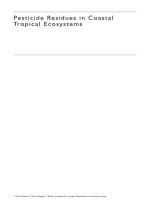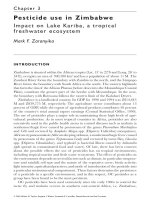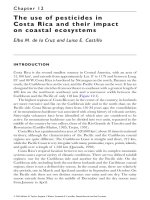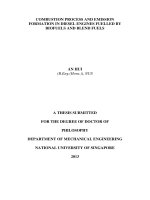Excellence in business communication 12e by vthill and brovee chapter 12
Bạn đang xem bản rút gọn của tài liệu. Xem và tải ngay bản đầy đủ của tài liệu tại đây (1.38 MB, 53 trang )
Copyright © 2017 Pearson Education, Inc.
Excellence in
in
Excellence
Business Communication
Communication
Business
Chapter 12
Writing Reports and Proposals
Copyright © 2017 Pearson Education, Inc.
Learning Objectives
1.
(1 of 2)
Explain how to adapt to your audiences when writing reports
and proposals, and describe the choices involved in drafting
report and proposal content.
2.
Identify five characteristics of effective writing in online
reports, and explain how to adapt your writing approach for
wikis.
Copyright © 2017 Pearson Education, Inc.
Chapter 12 - 3
Learning Objectives
3.
(2 of 2)
Discuss six principles of graphic design, and identify the
most common types of visuals used to present data,
information, concepts, and ideas.
4.
Explain how to integrate visuals with text effectively and
how to verify the quality of your visuals.
Copyright © 2017 Pearson Education, Inc.
Chapter 12 - 4
Drafting Reports
Reports and
and Proposals
Proposals
Drafting
(LO 1) Explain how to adapt to your audiences when writing
reports and proposals, and describe the choices involved in
drafting report and proposal content.
Copyright © 2017 Pearson Education, Inc.
Chapter 12 - 5
Adapting to Your Audience
•Formal Situations
Using the
“You” Attitude
•Informal Situations
•Cross-Cultural Situations
Copyright © 2017 Pearson Education, Inc.
Chapter 12 - 6
Drafting Report Content
Three
Three Main
Main Sections
Sections
The Introduction
Copyright © 2017 Pearson Education, Inc.
The Body
The Body
The Close
Chapter 12 - 7
Introduction to a Report
(1 of 2)
Authorization for Report
Establish Context
**********
Problem/Purpose of Report
Identify Subject
**********
Scope of Report
Preview Main Ideas
Background of Report
Copyright © 2017 Pearson Education, Inc.
Chapter 12 - 8
Introduction to a Report
(2 of 2)
Sources/Methods of Research
Establish Context
**********
Key Terms and Definitions
Identify Subject
**********
Limitations of Report
Preview Main Ideas
Organization of Report
Copyright © 2017 Pearson Education, Inc.
Chapter 12 - 9
The Body of a Report
(1 of 3)
• Explain the Problem or Project
• Facts, Evidence, and Trends
• Analysis of Potential Action
Copyright © 2017 Pearson Education, Inc.
Chapter 12 - 10
The Body of a Report
(2 of 3)
• Analysis of Pros and Cons
• Procedures or Processes
• Methods and Approaches
Copyright © 2017 Pearson Education, Inc.
Chapter 12 - 11
The Body of a Report
(3 of 3)
• Criteria or Benchmarks
• Conclusions/Recommendations
• Support Statements
Copyright © 2017 Pearson Education, Inc.
Chapter 12 - 12
The Close of a Report
Summary, Recommendations, Action
When Using the Direct Approach
When Using the Indirect Approach
When Seeking to Motivate Action
Copyright © 2017 Pearson Education, Inc.
Chapter 12 - 13
Problem Solving Report
Copyright © 2017 Pearson Education, Inc.
(1 of 2)
Chapter 12 - 14
Problem Solving Report
Copyright © 2017 Pearson Education, Inc.
(2 of 2)
Chapter 12 - 15
Drafting Proposal Content
•
Use the AIDA plan.
•
Demonstrate your knowledge.
•
Provide examples and information.
•
Research your competition.
•
Show that your proposal is feasible.
•
Relate your proposal to reader needs.
Copyright © 2017 Pearson Education, Inc.
Chapter 12 - 16
Introduction to a Proposal
Problem or
Opportunity
Copyright © 2017 Pearson Education, Inc.
•
Background Information
•
Problem Statement
•
Proposed Solution
•
Scope of the Proposal
•
Proposal Organization
Chapter 12 - 17
The Body of a Proposal
Proposed Solution
and Anticipated
Results
Copyright © 2017 Pearson Education, Inc.
•
Facts and Evidence
•
Proposed Approach
•
Work Plan Schedule
•
Qualifications Statement
•
Proposed Costs
Chapter 12 - 18
The Close of a Proposal
Summary and
Bottom Line
Copyright © 2017 Pearson Education, Inc.
•
Review Your Argument
•
Review Reader Benefits
•
Review Your Approach
•
Restate Your Qualifications
•
Request a Decision
Chapter 12 - 19
Helping Your Readers
Find Information
►UsingHeadings
Headingsand
andSubheadings
Subheadings
►Using
►EmployingTransitional
TransitionalDevices
Devices
►Employing
►ProvidingPreviews
Previewsand
andReviews
Reviews
►Providing
Copyright © 2017 Pearson Education, Inc.
Chapter 12 - 20
Using Productivity Tools
Templates
Templates
StyleSheets
Sheets
Style
Graphics
Graphics
Spreadsheets
Spreadsheets
Databases
Databases
Mediaand
andChannels
Channels
Media
Copyright © 2017 Pearson Education, Inc.
Chapter 12 - 21
Writing for
for Online
Online Reports
Reports
Writing
and Wikis
Wikis
and
(LO 2) Identify five characteristics of effective writing in online
reports, and explain how to adapt your writing approach for wikis.
Copyright © 2017 Pearson Education, Inc.
Chapter 12 - 22
Drafting Website Content
(1 of 2)
Build Trust with the Audience
Adapt to a Global Audience
Create Reader-Oriented Content
Copyright © 2017 Pearson Education, Inc.
Chapter 12 - 23
Drafting Website Content
(2 of 2)
Use a Concise, Skimmable Format
Include Effective, Relevant Links
Copyright © 2017 Pearson Education, Inc.
Chapter 12 - 24
Collaborating on Wikis
•
•
•
•
•
Rethinking your authorship expectations
Editing and improving the team’s work
Using templates and formatting options
Using editing and commenting features
Taking advantage of the “sandbox”
Copyright © 2017 Pearson Education, Inc.
Chapter 12 - 25









